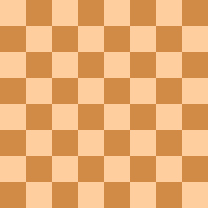
Back ساري الليل (شطرنج) Arabic Εφιάλτης (σκάκι) Greek Noctambule French Nottambulo (scacchi) Italian 나이트라이더 (체스) Korean Nakviša (šachmatai) Lithuanian Naktsjātnieks Latvian/Lettish Всадник (шахматы) Russian Nuttàmmulu SCN 夢魘 (仙靈棋) Chinese
| a | b | c | d | e | f | g | h | ||
| 8 |  | 8 | |||||||
| 7 | 7 | ||||||||
| 6 | 6 | ||||||||
| 5 | 5 | ||||||||
| 4 | 4 | ||||||||
| 3 | 3 | ||||||||
| 2 | 2 | ||||||||
| 1 | 1 | ||||||||
| a | b | c | d | e | f | g | h | ||
The nightrider (represented by an inverted knight) makes any number of knight moves in the same direction.
The nightrider, alternatively spelled knightrider and also known as the knightmare or unicorn (though the latter term sometimes refers to the bishop+nightrider compound), is a fairy chess piece that can move any number of steps as a knight in the same direction. The nightrider is often represented by an altered version of the knight's icon.[1] In this article, the nightrider is represented by an inverted knight and notated as N, while the knight is abbreviated as S for the German name Springer.
The nightrider was invented by W. S. Andrews in 1907 and named by Thomas Rayner Dawson, who first used it in fairy chess problems in 1925.[2]
- ^ Piececlopedia: Nightrider at The Chess Variant Pages
- ^ Hooper & Whyld (1996), p. 271